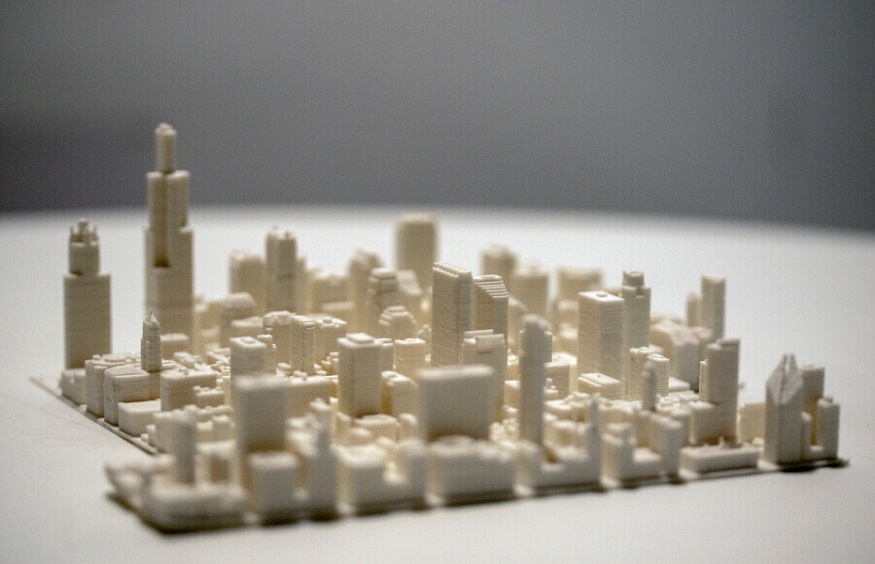 In the recent past, the conception of cities in the Emirates has undergone a massive shift to adjust to modern structures and rich architectural designs. One of the most remarkable changes that come with modernity is the application of 3D-printed city models. These are intricate hard copies of the city blueprints that allow free interaction with the designs. As the cities have grown, the models of 3D printing in Abu Dhabi have become more of a requirement than a luxury for city planners, builders, and every decision-maker in the areas of construction and development. The following are ten instances of how 3D-printed city models are revolutionizing the urban planning process in the UAE.
In the recent past, the conception of cities in the Emirates has undergone a massive shift to adjust to modern structures and rich architectural designs. One of the most remarkable changes that come with modernity is the application of 3D-printed city models. These are intricate hard copies of the city blueprints that allow free interaction with the designs. As the cities have grown, the models of 3D printing in Abu Dhabi have become more of a requirement than a luxury for city planners, builders, and every decision-maker in the areas of construction and development. The following are ten instances of how 3D-printed city models are revolutionizing the urban planning process in the UAE.
1. Improved Understanding of the Urban Layout
City workers’ printed works give a clear, understandable, and tactile picture of the mapped space construction which helps in everyone’s activity where there is a need to build streets, buildings, or other infrastructures in a city. This in turn helps to make those decisions which are in better fit for the optimization of the city. It also assists in determining the design’s possible flaws at an early stage since one can touch and move the model. It guarantees that every part of the urban layout is viewed from various angles.
2. Realistic Model of Cities and Their Environments
In contrast to virtual images, tangible three-dimensional exhibited models convey a true sense of the scale and proportions of objects making it possible even for the square of green spaces or junctions that will close off traffic to be assessed about the city. This realistic depiction allows for clarity on how the various parts of the city will be interdependent and work. This encourages teamwork among stakeholders so that there is no divergence regarding the picture of the project.
3. Improved Communication and Stakeholder Engagement
Backwards, in stark contrast, 3D models assist stakeholders in understanding elaborate city designs completely. They bring about easier conversations, boost help from the public, and generally better support for the completion of urban projects. Making the design available for physical exploration, incites the stakeholders to give any finer and constructive contributions. This ensures that there is more backing for the project and avoids conflicts arising when they are too much.
4. Simplifying Decision-Making in Urban Planning
Urban planners can use 3D models to assess several design aspects, for instance, the extent of shade from the buildings and human traffic, minimizing mistakes and enhancing decision-making. These models offer the ability to model the most possible social consequences of any domestic design component. Such models help the designers understand more clearly the connotations of the changes that they are proposing about the urban fabric.
5. Implementation and Appraisal of the Design Solutions:
3D modelling is helpful in urban planning as it allows the planners to sketch the plans in a matter of few hours and re-design several different configurations to select the best ones for the city development. This flexibility by 3D printed prototypes Dubai enhances the faster appraisal of the designs shortening the cycles of design proposals. This is done using real-life situations so that planners are assured that their designs will not only be good-looking but also functional as required.
6. Urban Sustainability and Environmental Issues:
3D print designs assist in estimating the factors affecting the environment including the energy use and the carbon credits produced. This helps the designers to adopt eco-friendly concepts in their designs. The proper incorporation of waste solutions and renewables can be ascertained by models ensuring the development of the city meets environmental standards. These models also assist in the design of cities by ensuring that workability and sustainability are integrated into the design.
7. Cost and Time Efficiency in Planning
One of the greatest advantages of 3D printing is that it accelerates the planning process while minimizing the need for revisions, extensive technical drawings, or even costly prototypes. It is possible to adjust designs much faster in this stage; hence the money and time spent designing it are more efficient. Since it reduces the need for expensive physical mock-ups, more funds can be directed to other aspects of the project. This benefit enables shorter project durations without increasing costs.
8. Integration with Smart City Technologies
3D models can be expanded with the help of smart city technologies like GIS, BIM, IoT, etc. That delivers timely information for urban designers to alter the designs suited to the high-tech environment. Technology convergence along with 3D models supports the provision of real-time changes in the city as well as its actual depiction. This guarantees that urban planning does not lag the improvements in technology.
9. An Educational and Training Tool for Future Urban Planners
Alongside the designs, the 3D models are an integral part of urban planning education as they provide students with the chance to work on a project and implement new ideas in practice. The juniors get to play around with the theory and various design strategies. This kind of active approach to learning is conducive to creativity and the growth of other social skills, which are necessary for urban planning in the future.
10. Enhancing Tourism and Cultural Heritage Preservation
3D printed designs ensure the conservation of the cultural attractions and heritage structures of the UAE through digital storage and virtual tourism – incorporation of ancient guarding of culture and contemporary technology to enhance the expansive culture of the country. These models have the advantage of being able to reach the masses, enabling them to appreciate the culture of the United Arab Emirates without having to travel there. The importance of the models can be seen in that in combination with digital preservation, they help to conserve these sites for the years to come through physical representations.
3D printing technology, and 3D printed city models specifically, creates cities and models speedily and that is why urban planning in the UAE is presently the most developed field. These models have made it simple and easier to understand the designs done, increased interactions, reduced the time taken in decision-making processes, and enhanced sustainable designs of cities. It goes without saying that as the United Arab Emirates advances, the technology of three-dimensional printing will also be positioned at the fore-built planning activities of the country facilitating the building of smarter and environmentally friendly cities in the years to come.











Leave a Reply
You must be logged in to post a comment.